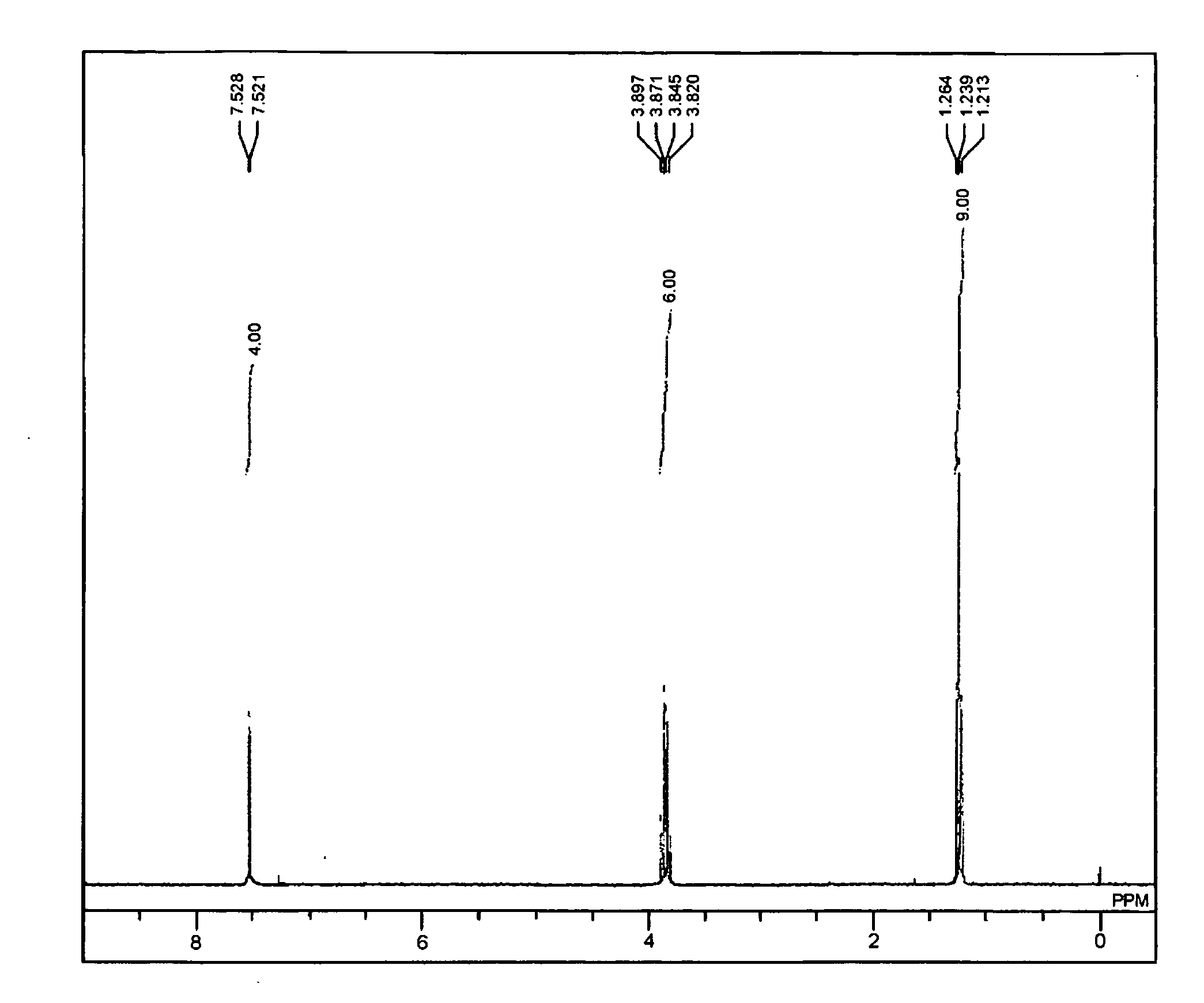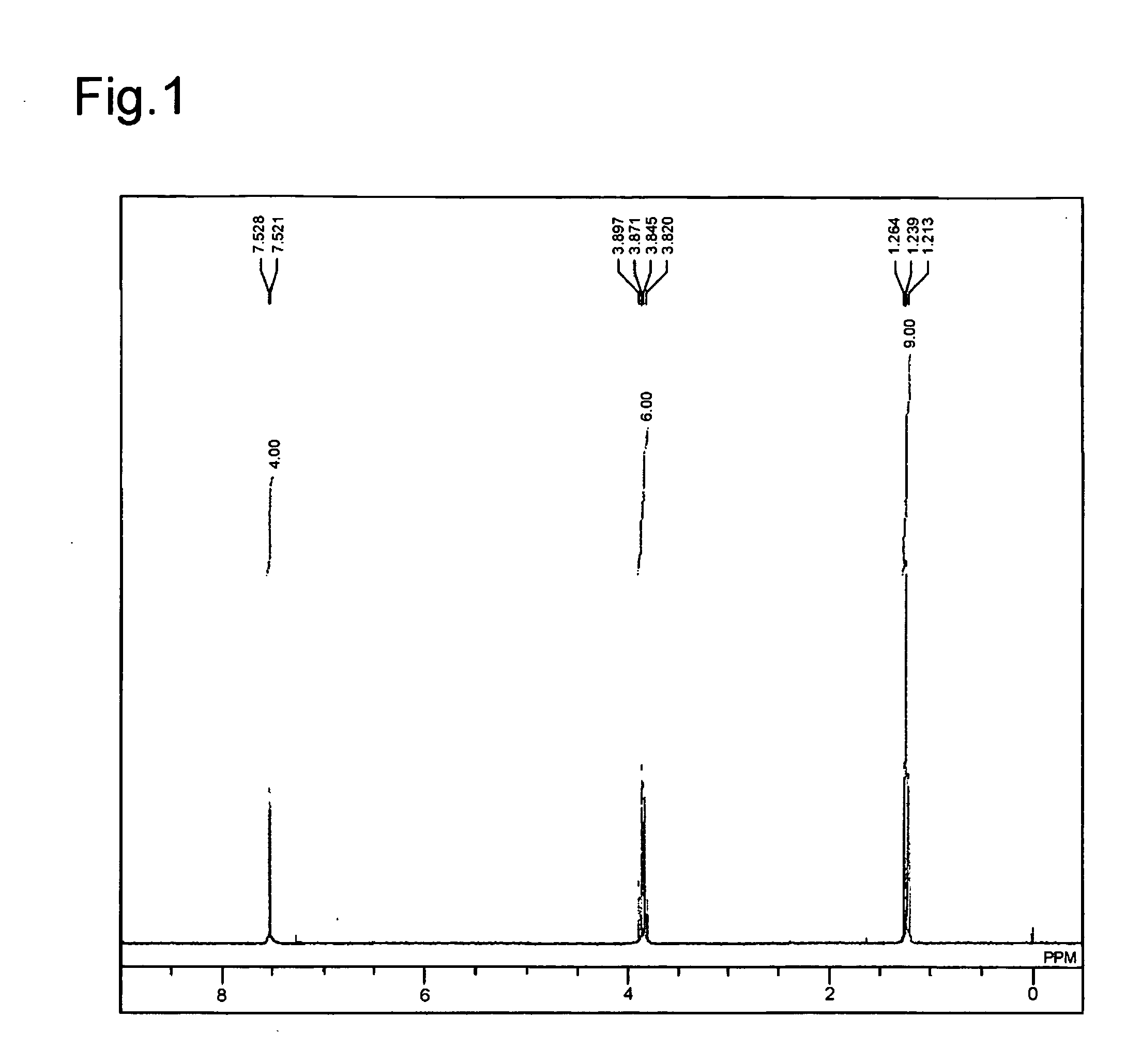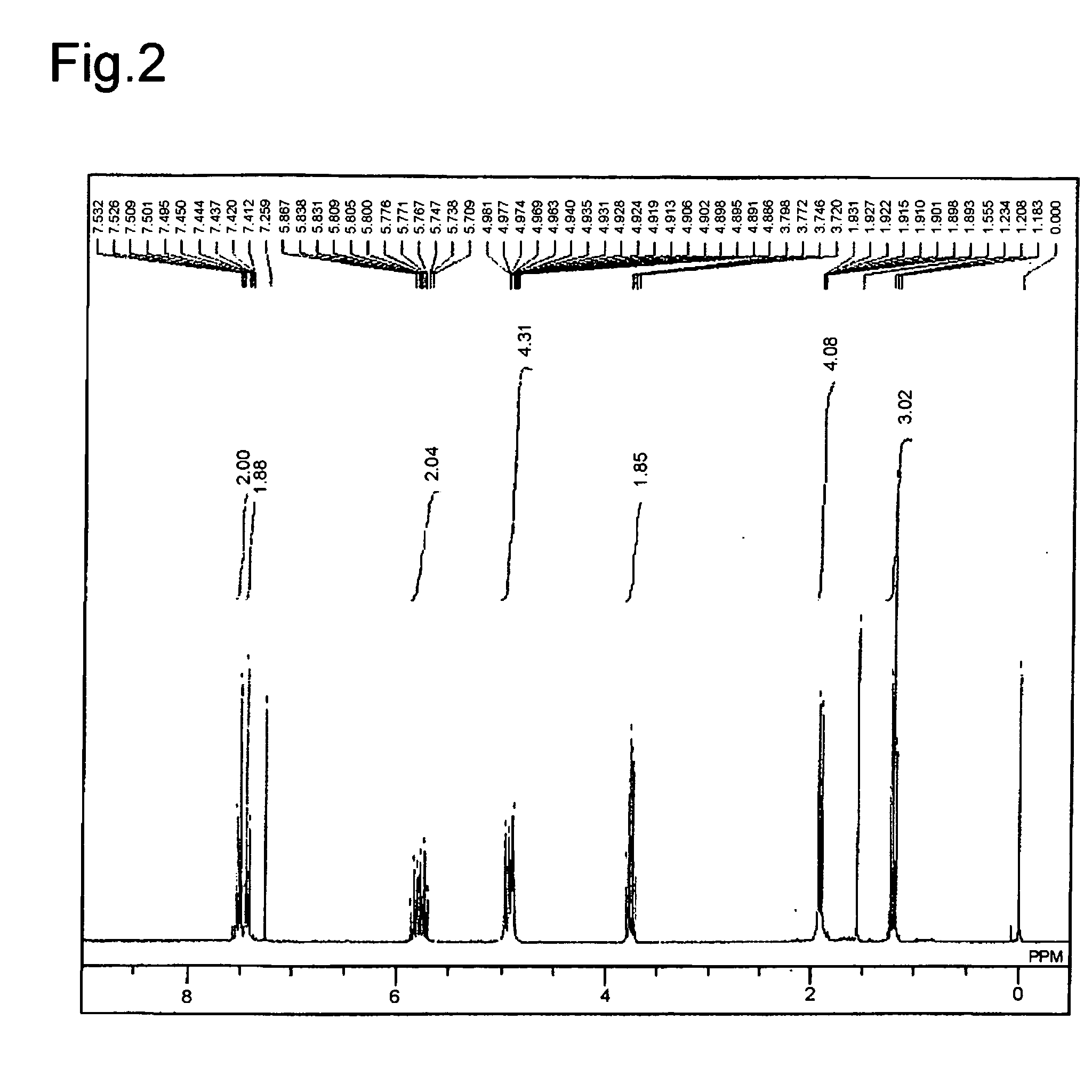Organosilane compound and organosilica obtained therefrom
- Summary
- Abstract
- Description
- Claims
- Application Information
AI Technical Summary
Benefits of technology
Problems solved by technology
Method used
Image
Examples
synthesis example 1
[0085]4-bromo-triethoxysilylbenzene was prepared as follows.
[0086]At first, a mixture of 4-iodo-bromobenzene (2.60 g, 9.19 mmol), t-butylammoniumiodido (3.39 g, 9.18 mmol) and [Rh(cod)(CH3CN)2] (105 mg, 0.277 mmol) was added with dimethylformamide (DMF: 26 mL) and triethylamine (2.56 mL, 18.4 mmol). Then, triethoxysilane (1.87 mL, 10.1 mmol) was added dropwise thereto at 0° C. The resultant mixture was stirred under a nitrogen atmosphere at 80° C. for one hour to obtain a reaction mixture. Subsequently, a solvent in the reaction mixture was distilled with a vacuum pump. Under a nitrogen atmosphere, the residue was extracted with ether, filtered with celite, and concentrated to obtain a crude product. Thereafter, the crude product thus obtained was purified by Kugel distillation, and thereby 4-bromo-triethoxysilylbenzene was obtained (2.38 g, 81% yield).
[0087]The obtained compound was subjected to a 1H NMR measurement. FIG. 1 shows a graph of the obtained NMR. From the NMR measuremen...
example 1
[0088]4-bromo-diallylethoxysilylbenzene was prepared as follows.
[0089]At first, the 4-bromo-triethoxysilylbenzene (4.74 g, 14.8 mmol) obtained in Synthesis example 1 was added dropwise with 1 mol / L of allylmagnesium bromide (59.4 mmol (solvent: ether), 59.4 mL) at 0° C. The mixture was stirred under a nitrogen atmosphere at room temperature overnight to obtain a reaction mixture. Subsequently, the obtained reaction mixture was neutralized with 10% by mass of an HCl solution. Thereafter, the organic layer was extracted with ether. The collected organic layer was washed with a saturated sodium acid carbonate solution (sat. NaHCO3) and a saturated sodium chloride solution (sat. NaCl). After that, the obtained organic layers were dried with anhydrous magnesium sulfate (MgSO4), filtered, and concentrated to obtain a crude product. The crude product thus obtained was purified by Kugel distillation, and thereby 4-bromo-diallylethoxysilylbenzene was obtained (4.20 g, 90.7% yield).
[0090]The ...
synthesis example 2
[0091]4-(triethoxysilyl)iodobenzene was prepared as follows.
[0092]At first, a mixed solution of 1,4-diiodobenzene (15 g, 45.6 mmol) and a distilled tetrahydrofuran solution (dist. THF: 114 mL) was added dropwise with 2 mol / L of i-PrMgCl (24 mL (solvent: THF), 48 mmol) at −30° C. Then, the resultant mixture was stirred under a nitrogen atmosphere at −30° C. for 5.5 hours to obtain a reaction solution. Subsequently, the reaction solution was added dropwise (3 drops per second) using a cannula into a mixed solution of tetraethoxysilane (TEOS: 60.6 mL, 272 mmol) and dist. THF (90 mL), which was cooled to −30° C. Thereafter, the resultant mixed solution was stirred at −30° C. for one hour, and further stirred at room temperature for 44 hours to obtain a reaction mixture. After that, the obtained reaction mixture was added with ether (100 ml), and washed with distilled water (dist. H2O). Then, the aqueous layer was extracted with ether. The collected organic layers were washed with sat. N...
PUM
 Login to View More
Login to View More Abstract
Description
Claims
Application Information
 Login to View More
Login to View More - R&D
- Intellectual Property
- Life Sciences
- Materials
- Tech Scout
- Unparalleled Data Quality
- Higher Quality Content
- 60% Fewer Hallucinations
Browse by: Latest US Patents, China's latest patents, Technical Efficacy Thesaurus, Application Domain, Technology Topic, Popular Technical Reports.
© 2025 PatSnap. All rights reserved.Legal|Privacy policy|Modern Slavery Act Transparency Statement|Sitemap|About US| Contact US: help@patsnap.com



